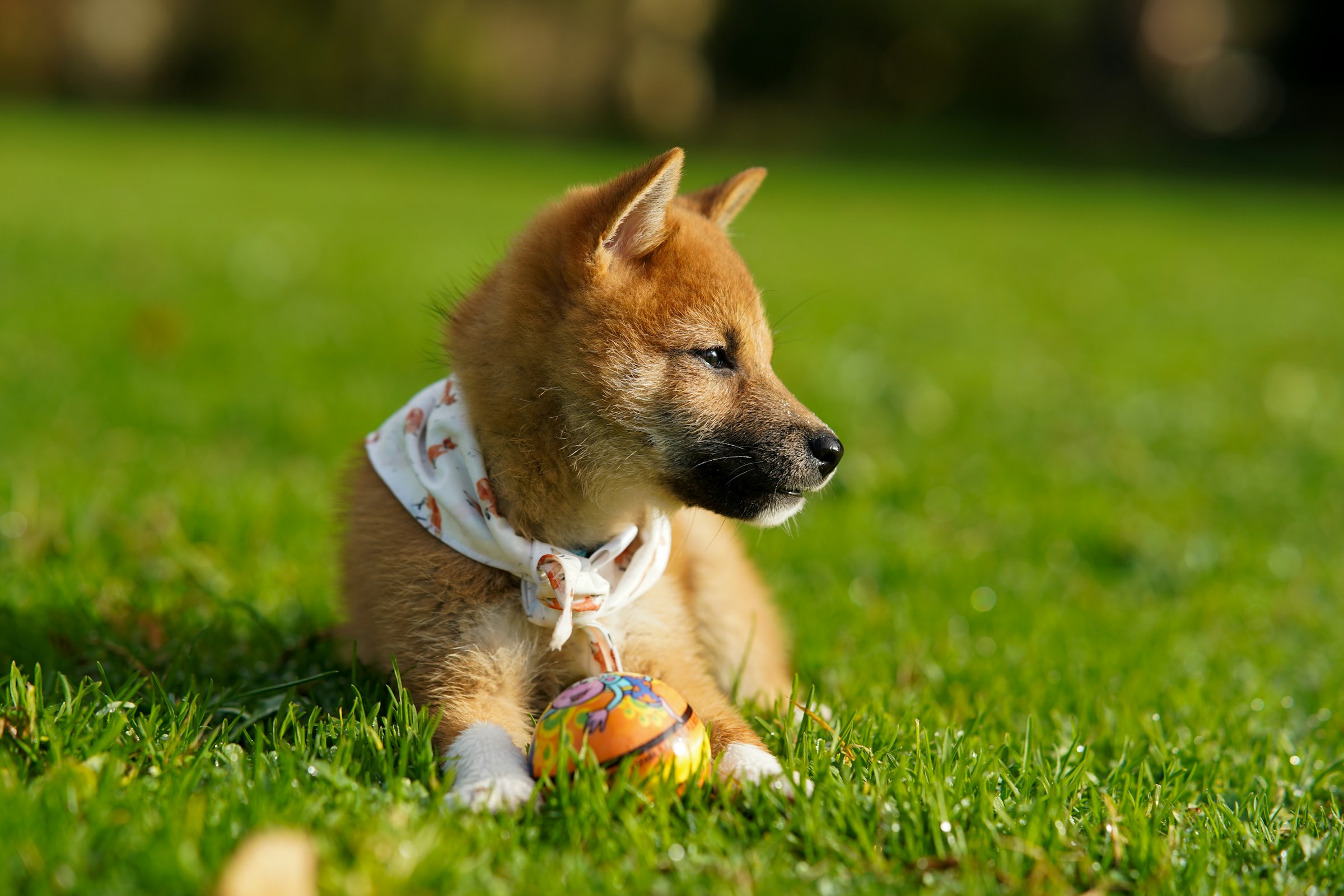Welcoming guests can be a challenge for Akitas, who are often protective and aloof. Proper training ensures your dog greets visitors with enthusiasm instead of hesitation or aggression. By leveraging positive reinforcement and socialization techniques, you can transform your Akita's behavior, making visits enjoyable for everyone. Explore effective training methods tailored to your Akita, fostering a friendly and inviting atmosphere in your home. Discover how to turn your loyal companion into a gracious host, welcoming each new face with open paws.
Understanding Akita Behavior
Akitas are known for their distinct temperament, which can be both charming and challenging. Understanding Akita behavior is crucial for owners to foster a harmonious relationship with their pets.
A découvrir également : What are the key considerations when selecting a training collar for a stubborn Akita?
Typically, Akitas are loyal and protective, often forming strong bonds with their family members. However, this loyalty can sometimes translate into dog aggression, especially towards unfamiliar dogs or animals. This trait necessitates early socialization to ensure they can interact positively with other pets and people.
Visitor anxiety is another common issue. Akitas may exhibit apprehension or defensive behavior when strangers enter their territory. This reaction stems from their instinct to protect their home and loved ones. To mitigate this, owners should gradually introduce their Akitas to new people and environments, reinforcing positive experiences.
A lire aussi : What are the essential steps to take when introducing a rescue Greyhound to a home with young children?
Socialization plays a critical role in managing these behaviors. By exposing Akitas to various situations, owners can help them become more adaptable and less prone to aggression or anxiety. Structured training sessions and obedience classes can further enhance this process, promoting a balanced and well-adjusted temperament.
Ultimately, understanding and addressing these behavioral nuances can lead to a more fulfilling companionship with an Akita.
Preparing for Training
Preparing for training an Akita involves creating a calm and safe environment. This space should be free from distractions to help your dog focus. Choose a quiet area in your home or garden where your Akita feels comfortable. Consistency in this location can enhance their learning experience.
Essential Dog Training Tools
Having the right dog training tools is crucial for effective sessions. A sturdy leash and collar are fundamental for control and safety. Treats are excellent motivators, so stock up on healthy, bite-sized options. Consider clickers for positive reinforcement; they provide clear signals to your Akita. Toys can also be used as rewards, adding variety to the training routine.
Setting Realistic Expectations
When embarking on your Akita's training journey, it's important to set realistic expectations. Understand that each dog learns at its own pace. Akitas, with their independent nature, may require more patience. Celebrate small victories and progress, even if it seems slow. Remember, persistence and consistency are key in achieving desired outcomes.
By carefully preparing for training, using essential tools, and setting achievable goals, you can foster a more effective and enjoyable training experience for both you and your Akita.
Step-by-Step Training Techniques
Training an Akita requires a thoughtful approach, especially when addressing specific behaviors. Using positive reinforcement is essential for encouraging welcoming behavior. This method involves rewarding your Akita with treats or praise when they display desired actions, reinforcing the idea that good behavior leads to positive outcomes.
When it comes to reducing aggression or anxiety towards visitors, gradual exposure combined with positive reinforcement can be effective. Start by allowing your Akita to observe visitors from a distance, rewarding calm behavior. Gradually decrease the distance over time, always ensuring your Akita remains relaxed. This technique helps them associate visitors with positive experiences, reducing defensive reactions.
Integrating commands and cues into training sessions can further enhance behavior modification. Begin with basic commands like "sit" or "stay," using consistent cues and rewards. As your Akita masters these, introduce more complex commands. Consistency and repetition are key in helping your Akita understand and respond to these cues effectively.
By focusing on these training techniques, you can address behavioral challenges and foster a more harmonious relationship with your Akita.
Socialization Strategies
Introducing an Akita to new people requires careful planning and execution. Gradual exposure is key. Start by allowing your Akita to observe visitors from a distance, ensuring they remain calm. This helps them adjust to the presence of strangers without feeling threatened. Over time, decrease the distance, rewarding your Akita for maintaining composure.
Controlled environments play a crucial role in successful socialization. Choose a familiar space where your Akita feels secure. This reduces anxiety and fosters a positive experience when introducing new people. A controlled setting allows you to manage interactions effectively, ensuring your Akita remains comfortable.
To facilitate successful introductions, consider these tips:
- Begin with brief encounters, gradually increasing duration.
- Encourage visitors to offer treats, associating them with positive experiences.
- Maintain a calm demeanour, as your Akita will mirror your energy.
By employing these socialization strategies, you can help your Akita develop confidence and adaptability in various social situations. This approach not only reduces anxiety but also strengthens the bond between you and your pet.
Addressing Common Challenges
Training an Akita can present unique training challenges, particularly when it comes to overcoming fear-based behaviors and correcting undesirable actions. Identifying the specific triggers that cause aggression or anxiety in your Akita is the first step. These triggers can vary widely, from unfamiliar environments to sudden loud noises. Observing your Akita's reactions in different situations can help pinpoint these stressors.
Overcoming Fear-Based Behaviors
To effectively address fear-based behaviors, a gradual desensitisation approach is recommended. Begin by exposing your Akita to the trigger at a low intensity, gradually increasing exposure as they become more comfortable. This method helps your Akita build confidence and reduces their instinctual fear responses.
Consistency and Patience
Consistency and patience are paramount in behavior correction. Training should be a regular part of your routine, using the same commands and rewards to reinforce positive behaviors. Patience is essential, as changes in behavior may take time. Celebrate small victories and progress, reinforcing your Akita's achievements with praise or treats. By maintaining a consistent and patient approach, you can effectively manage and correct challenging behaviors, fostering a more harmonious relationship with your Akita.
Expert Advice and Insights
Engaging with dog training experts can provide invaluable guidance when managing Akita behavior. These professionals emphasize the importance of understanding the breed's unique traits and adapting training methods accordingly. One common mistake is underestimating the significance of early socialization. Experts advise introducing Akitas to various environments and situations from a young age to foster adaptability and reduce aggression.
Another frequent error is inconsistent training. Professional tips stress the necessity of maintaining regular training sessions with consistent commands and rewards. This consistency helps reinforce desired behaviors and prevents confusion.
For those seeking further learning and support, many resources are available. Online courses, books, and local training classes offer comprehensive strategies tailored to Akitas. Engaging with a community of Akita trainers can also provide support and shared experiences, enhancing your training approach.
By incorporating these professional tips and avoiding common pitfalls, you can effectively nurture a well-behaved and balanced Akita.
Real-Life Success Stories
Real-life dog training success stories provide valuable insights into effective methods and techniques. These case studies highlight the journey of Akita owners who have navigated the challenges of training their pets. One notable example is of an Akita named Max, whose owner, Sarah, successfully used positive reinforcement to manage aggression. By consistently rewarding calm behaviour, Sarah transformed Max's interactions with other dogs, turning potential conflicts into peaceful encounters.
Akita owner experiences also shed light on the importance of patience and perseverance. John, another Akita owner, shared how gradual exposure helped his dog, Bella, overcome anxiety around visitors. By slowly introducing Bella to new people and environments, John noted significant improvements in her confidence and sociability.
Testimonials from owners like Sarah and John underscore the significance of consistency and understanding in training. They emphasise the lessons learned from these experiences, such as the need for early socialisation and the benefits of tailored training approaches. By learning from these case studies, potential and current Akita owners can adopt strategies that have proven effective, fostering a more harmonious relationship with their pets.
Enhancing Training with Visual Aids
Incorporating visual aids can significantly enhance the training experience for both you and your Akita. Dog training videos and infographics offer a dynamic way to convey complex concepts, making it easier for owners to grasp effective techniques. Visual aids can simplify training processes, allowing you to observe and replicate methods demonstrated by experts.
Dog training videos are particularly beneficial as they provide step-by-step demonstrations of commands and behaviour modifications. Watching these videos allows you to see how professional trainers handle specific challenges, offering insights into timing and body language that are crucial for successful training. Infographics, on the other hand, distil information into concise, easy-to-understand visuals, making them an excellent tool for quick reference.
To incorporate visual learning into your sessions, consider these steps:
- Watch recommended dog training videos before practising techniques with your Akita.
- Use infographics to remind yourself of key points during training.
- Apply what you've learned by mimicking the actions and commands shown in videos.
By leveraging visual aids, you can improve your understanding of training methodologies, leading to more effective and engaging sessions with your Akita.






